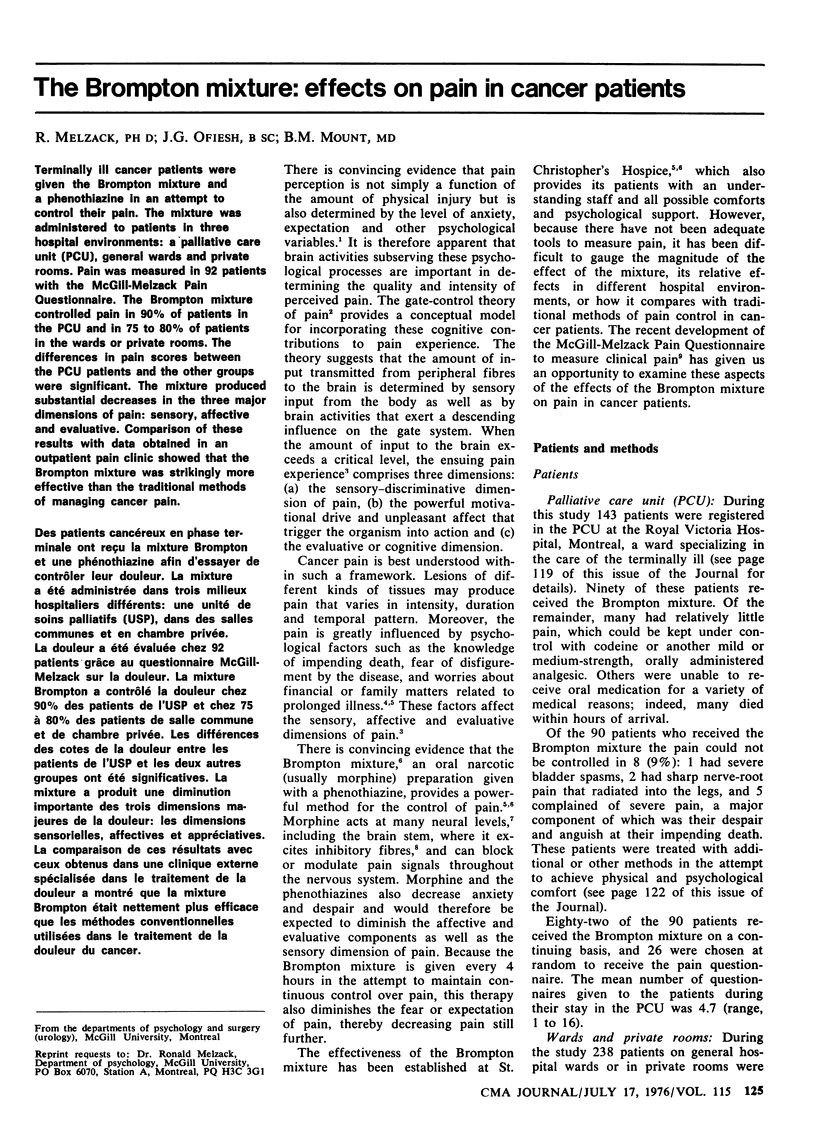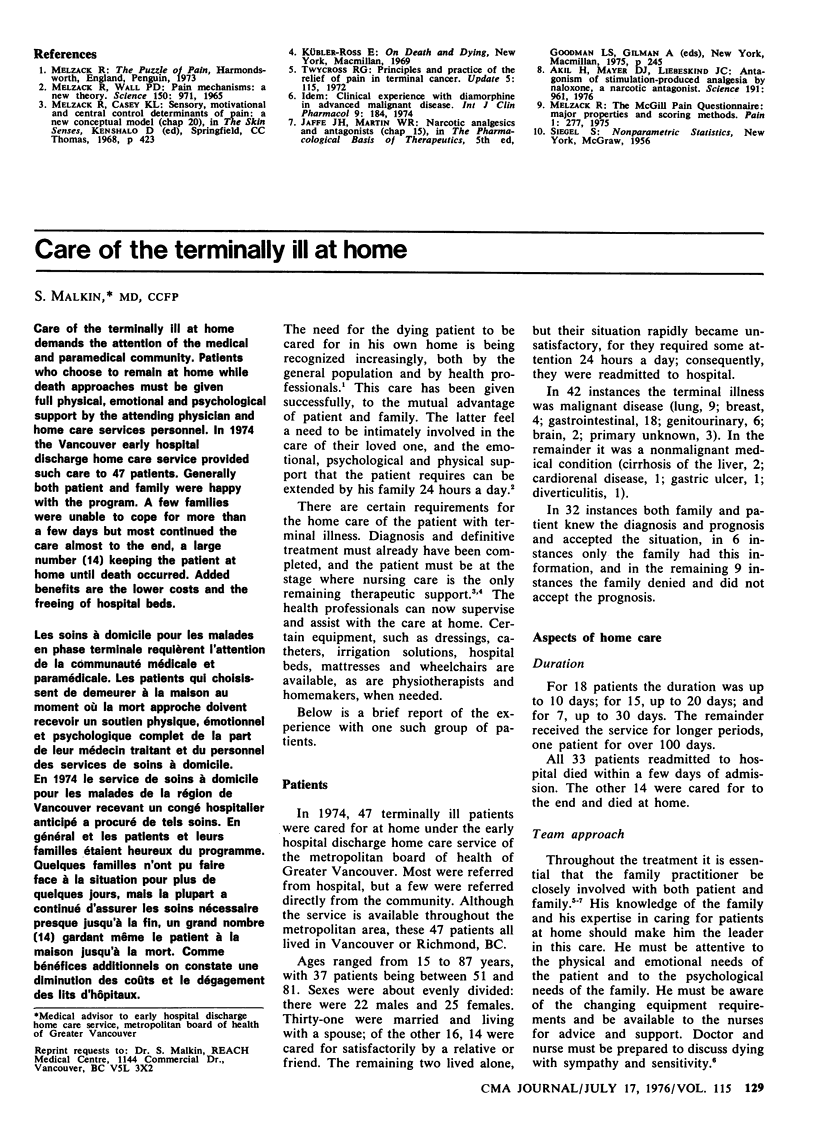Abstract
Terminally ill cancer patients were given the Brompton mixture and a phenothiazine in an attempt to control their pain. The mixture was administered to patients in three hospital environments: a palliative care unit (PCU), general wards and private rooms. Pain was measured in 92 patients with the McGill-Melzack Pain Questionnaire. The Brompton mixture controlled pain in 90% of patients in the PCU and in 75% to 80% of patients in the wards or private rooms. The differences in pain scores between the PCU patients and the other groups were significant. The mixture produced substantial decreases in the three major dimensions of pain: sensory, affective and evaluative. Comparison of these results with data obtained in an outpatient pain clinic showed that the Brompton mixture was strikingly more effective than the traditional methods of managing cancer pain.
Full text
PDF




Selected References
These references are in PubMed. This may not be the complete list of references from this article.
- Akil H., Mayer D. J., Liebeskind J. C. Antagonism of stimulation-produced analgesia by naloxone, a narcotic antagonist. Science. 1976 Mar 5;191(4230):961–962. doi: 10.1126/science.1251210. [DOI] [PubMed] [Google Scholar]
- Melzack R. The McGill Pain Questionnaire: major properties and scoring methods. Pain. 1975 Sep;1(3):277–299. doi: 10.1016/0304-3959(75)90044-5. [DOI] [PubMed] [Google Scholar]
- Melzack R., Wall P. D. Pain mechanisms: a new theory. Science. 1965 Nov 19;150(3699):971–979. doi: 10.1126/science.150.3699.971. [DOI] [PubMed] [Google Scholar]


